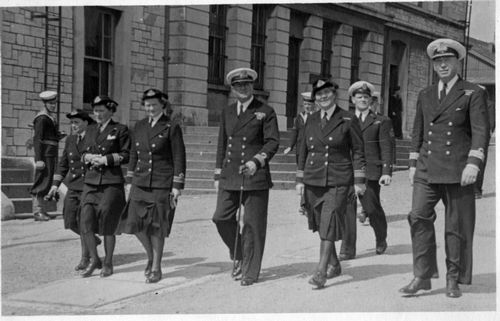Catalogue number 45143
WRNS Commodore 1946
Last year was the 100th anniversary of the creation of the Women's Royal Naval Service (WRNS). The aim in 1917 was to substitute women for men on certain shore work within the Royal Navy and so freeing men to go to sea. A similar service already existed, the Women's Auxiliary Army Corps, doing, for example, secretarial work and driving, so releasing men for duty in the Army. The scope of work was initially clerical and domestic duties but as the service developed, WRNS were employed in servicing anti-submarine equipment, coding, aircraft maintenance and signals. With the end of the war, the service was disbanded in 1919. The service was reformed in 1938 with Mrs Vera Laughton Mathews as Director/Commodore and WRNS increased the scope of their technical skills in parallel with the technological advances of the time. In this photograph taken in 1946, the Director (second from the right) is accompanied by a Deputy Director and possibly two Deputy Assistant Directors, WRNS.
Verso: Gwyneth Lilecaine (sic) Summer 1946 Commodore Dame Laughton Mathews etc
12.6cm x 7.8cm Gelatin silver print
|
 |